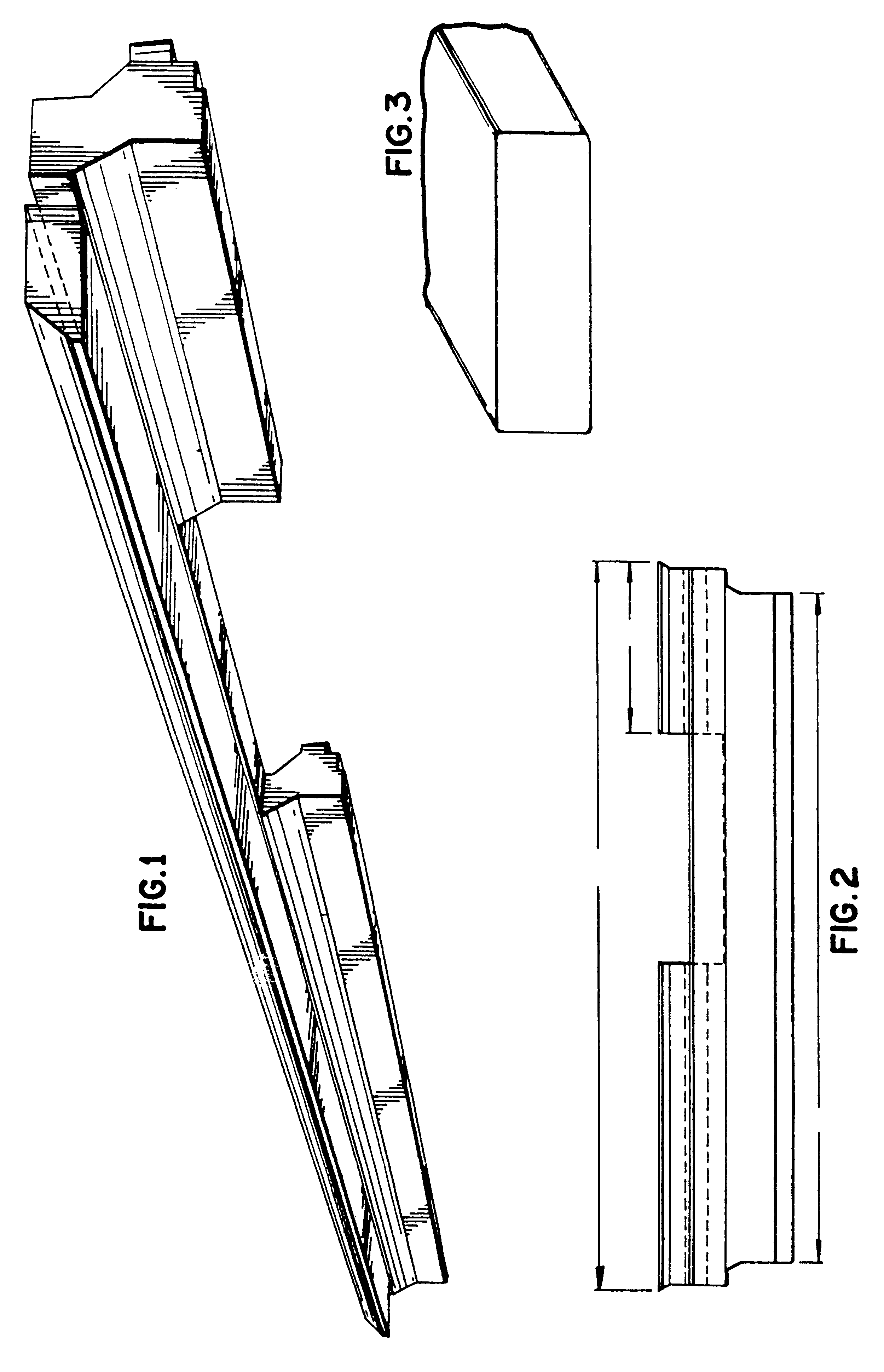Method of forming a foamed thermoplastic polymer and wood fiber profile and member
a thermoplastic polymer and foam technology, applied in the field of foamed thermoplastic polymer and wood fiber profile and member, can solve the problems of wood members suffering cost problems, wood used in these applications, and under certain circumstances, and achieve excellent thermal properties, good chemical resistance and hardness, and improved weatherability
- Summary
- Abstract
- Description
- Claims
- Application Information
AI Technical Summary
Benefits of technology
Problems solved by technology
Method used
Image
Examples
Embodiment Construction
Foamed PVC-Wood Fiber Composite Formulation
All foam PVC wood fiber composite testing has been completed using material produced as follows:
75 pounds per hour feed rate of standard PVC wood fiber composite pellets (see U.S. Pat. Nos. 5,486,553, 5,539,027, 5,406,768, 5,497,594, 5,441,801 and 5,518,677 for pellet information)
cofeeding of about 13.5 grams per minute of Reedy International AP40 (nitrogen (N.sub.2) gas generating azide agent) blowing agent (1.786 lb / hr, 2.38%)
cofeeding of about 36.1 grams per minute of Rohm & Haas Paraloid K-415 acrylic modifier (4.776 lbs / hr, 6.37%).
Extruder Operating Conditions
Materials used and representative extruder operating conditions for manufacturing the foamed PVC / wood fiber composite are shown in the following table.
Coefficient of Linear Thermal Expansion
Various polymers were tested for linear thermal expansion (ASTM No. D 696-91.epsilon..sup.1). Each polymer was extruded as a mull casing for this test. The results of this testing are summarize...
PUM
| Property | Measurement | Unit |
|---|---|---|
| temperature | aaaaa | aaaaa |
| decomposition temperature | aaaaa | aaaaa |
| temperature | aaaaa | aaaaa |
Abstract
Description
Claims
Application Information
 Login to View More
Login to View More - R&D
- Intellectual Property
- Life Sciences
- Materials
- Tech Scout
- Unparalleled Data Quality
- Higher Quality Content
- 60% Fewer Hallucinations
Browse by: Latest US Patents, China's latest patents, Technical Efficacy Thesaurus, Application Domain, Technology Topic, Popular Technical Reports.
© 2025 PatSnap. All rights reserved.Legal|Privacy policy|Modern Slavery Act Transparency Statement|Sitemap|About US| Contact US: help@patsnap.com


